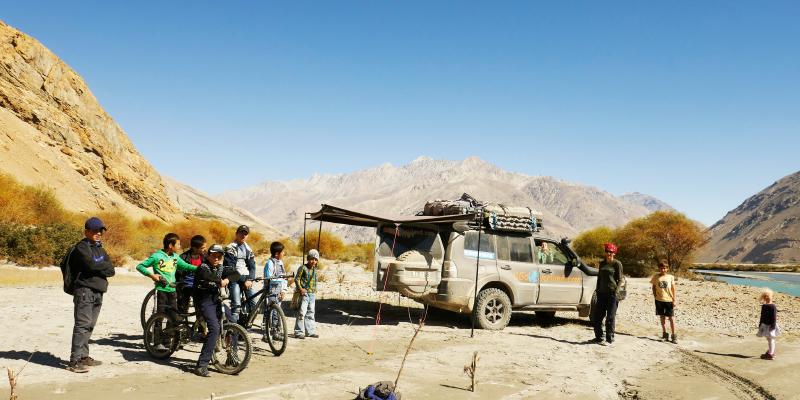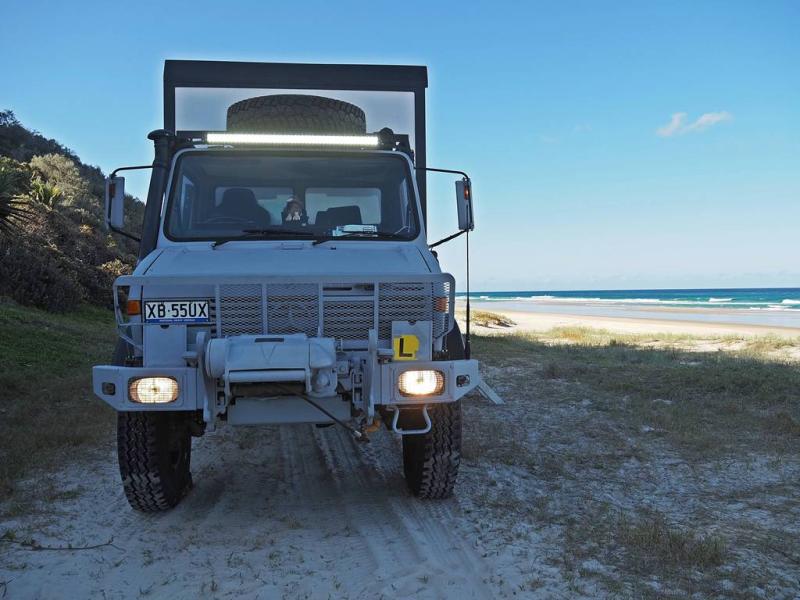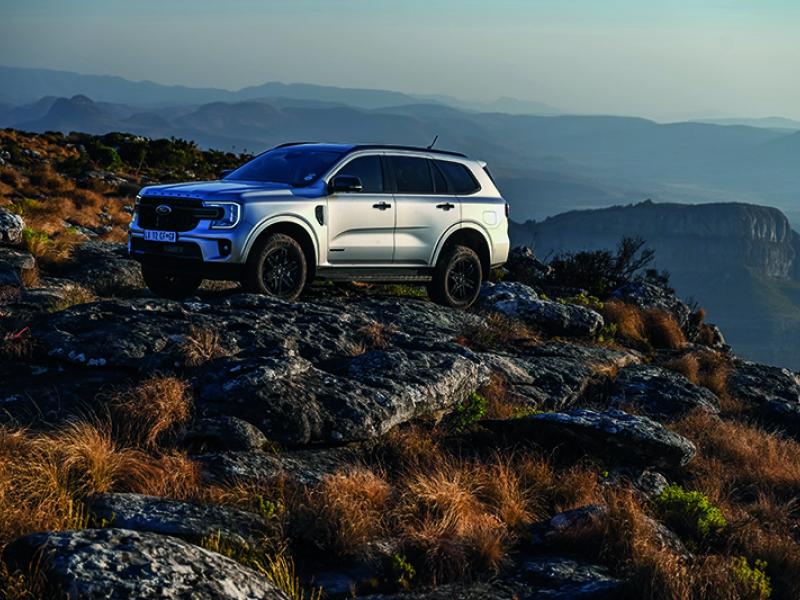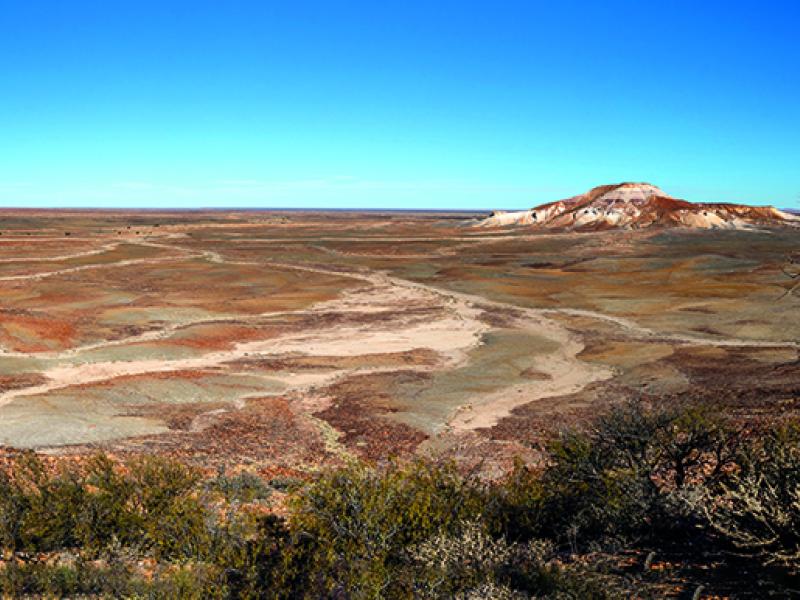Last month Kiwi Overlander Aaron Rich described his family’s entry into Tajikistan via a snowy mountain pass at 4,282 metres.This month they continued exploring Tajikistan’s Pamirs, reaching the Wakhan Valley and border with Afghanistan.\
I’d been somewhat anxious about The Khargush Pass Military Checkpoint for a while. Situated near the isolated Khargush Pass (4,344 metres), on the Tajik side of the border with Afghanistan, I’d read of foreigners being harassed by soldiers at this remote military checkpoint.
A Belgian cyclist was robbed with a gun to his cheek here; this by the very soldiers who were supposed to be clearing him safely through the checkpoint!
Fortunately, we’re benefiting from a recent strong drive across Central Asia to embrace tourism and hence tourists. In just the past couple of years alone most countries in Central Asia (perhaps except Turkmenistan) have taken significant steps to open up and combat the worst types of corrupt and/or intimidating behaviour that has sometimes occurred in the past.
From a visitor’s perspective at least, it appears to be working well – we generally haven’t experienced too many issues. There were a couple of efforts to extort us in Mongolia, many dodgy police in Kyrgyzstan (likely in Kazakhstan too, though they were always busy with another victim when we came along). And there was the attempt to levy a fake tax on us upon entering Tajikistan.
However, I’m pleased to report we encountered no issues whatsoever at the Khargush Pass military checkpoint, notwithstanding its intimidating reputation. Just one soldier attended to us, and unusually he was unarmed. I wondered if this was deliberate, perhaps intended to make the soldiers appear less intimidating to overland tourists increasingly passing this way. Moreover, the young soldier was polite and professional – no problem at all.
The Wakhan Valley
After a long gradual descent through remote rocky landscapes, alongside a fast flowing, clear river, we continued along a lonely cliff edge route all the way down to the valley floor. Being on the valley floor seemed ‘low’, though in reality we were still just above 2,700 metres elevation. This is the Wakhan Valley, and we were immediately captivated by its sheer beauty.
The Wakhan Valley is clean, with attractive though simple villages, and at this lower altitude the environment is totally different from the high Eastern Pamirs. Fertile land, trees and flowers all abound. The climate at this altitude too was totally different – sunny and low 20s through the October days, with nights no colder than minus 1 or 2; and at this altitude our tent heater worked reliably again!
The Wakhan Valley is very peaceful, and indeed the friendliest place I’ve ever been – it seemed all the locals wanted to welcome us wherever we were spotted. It initially takes some getting used to the idea that the villages we could see just over the river from us were in Afghanistan. But we would later follow this river-border for many miles and would soon become totally accustomed to peeking into the many Afghan villages, as well of course as exploring more thoroughly those on the Tajik side.
For more than 2,000 years this was home to the Wakhi people, who had no say in matters when towards the end of the 1800’s the border that exists today was imposed on them as a result of an agreement reached between the Russian and British Empires. After the border hardened in 1893, local Wakhi people found themselves residents of different countries, no longer able to freely visit friends and family just across the river.
As we progressed along the Wakhan Valley over the next several days, we regularly passed by groups of young Tajik soldiers patrolling along the river, typically in groups of four. Just boys many of them really, but heavily armed and ready to engage in deadly conflict at a moment’s notice. Some of the soldiers would smile or wave to us as we passed. Drugs are smuggled from Afghanistan into Tajikistan daily in this region, though that’s not the most significant threat here. Taliban have no real interest in the Wakhan Valley, but equally they’re not far away and they’re not the only militant threat nearby. Security tensions can escalate rapidly here and as such we required special permits to visit this region; these were regularly checked at separate police and military checkpoints along our route.
We spent three nights exploring parts of the Wakhan Valley nearby the tiny village of Langar, including bathing in the glorious ancient hot springs at Bibi Fatima and exploring ruins of the 12th Century fortress at Yamchun; both are located high up a mountainside offering stunning views along the valley and into Afghanistan. The site of the Yamchun fort is believed to have been built on since the 3rd Century BC; testament to the fact that 2,000 years ago a main artery of the Silk Road went through the Pamirs.
A memorable experience with a Wakhan Valley family
A local family invited us to erect our tent in a space above their traditional Pamiri home, situated on the mountainside overlooking the Wakhan Valley.
We were offered chai (tea), which soon turned into a delicious dinner cooked on a very basic stove – powered with cattle dung of course! Davlatsho, Sofia and their three children of similar age to ours made wonderful hosts. Although we were invited to sleep in the house, being a typical one room Pamiri home we preferred our more private and familiar accommodations in the tent.
By ‘one room’ home I literally mean that – one single heated room serves as the kitchen, dining room, living room and family bedroom all in one. Yet there is no kitchen bench or sink (no running water), no table and chairs, no couch and no beds. The house has only one window, plus one more in the roof above the stove to allow smoke out. The toilet was an outhouse – there is no bath or shower, although Davlatsho is in the process of building a simple cattle dung heated bathroom outside.
This description might make their home sound rather unpleasant to some, and yet it wasn’t truly unpleasant – ‘poor’ yes, but mostly it’s a completely different way of life here. This was not a ‘homestay’ enhanced in any way for foreign tourists, it was just a traditional local home. Local people eat dinner seated on cushions on the floor. In the evening this is cleared to make space for the sleeping rugs to be laid out. A more substantial traditional Pamiri home would feature permanent sleeping platforms.
Economically this region is extremely poor, with GDP per capita reported at a meagre US$200 per annum. Yet I came away with the feeling this common economic metric doesn’t fairly reflect differences in how life is lived here vs the developed world.
This family’s hillside plot contains their own ploughed fields used for growing potatoes, with their own orchard directly above. Their sheep and goats roam nearby. As with many in the Wakhan Valley, this family are so self-sufficient that they produce almost all of their own food requirement – indeed Davlatsho even built the family’s home himself, this not being unusual here.
It’s worth noting that the local population first lost, and then had to relearn, the self-sufficiency skills they proudly possess today. During the era of the Soviet Union, the Pamirs produced little food, with locals almost totally reliant on goods imported from Russia. Consequently, the collapse of the Soviet Union in 1991 sparked famine and crisis here, even though the necessary resources and potential were right here in abundance.
Khorog
At the centre of Khorog is a beautiful little park, complete with a children’s playground and a large ‘beach’ that is filled with water diverted from the adjacent river during summertime. It’s hard to believe that in the 1990s this park was dug up to grow crops – this to address famine resulting from the break-up of the Soviet Union.
Khorog is the administrative capital of the Pamirs and the nearest thing to a true little town that we’d come through in the 1,000 kilometres since Kyrgyzstan’s Osh. It was also our first opportunity to refuel with quality diesel.
On the day of our arrival into Khorog we were alarmed by the numbers of both regular police and combat ready police to be seen on the streets, this in addition of course to the always strong military presence. The combat ready police, wearing helmets and body armour, gave the impression that we’d arrived into Khorog at a time of heightened tensions, but we would soon learn that this is just how it is here ordinarily.
Visiting an Afghan Border Market
From Khorog we had an opportunity to visit a nearby Afghan/Tajik border market held on Saturdays. This market takes place on Tajik soil, with Afghan traders permitted to cross the river with their goods. Trade takes place under close scrutiny by soldiers from both sides of the border.
Our interest in attending the market was purely to gain some additional exposure to Afghan people. We’d been peeking into their villages just across the river from us for a week and welcomed the opportunity to see some Afghan locals up close. We came away with the impression that those attended the market from Afghanistan were quite different in appearance and attire to those residing on the Tajik side, offering some insight into the different culture prevailing across the river.
The ‘Middle’ Route
As mentioned previously, I desired to explore the Pamirs more thoroughly than most would – a GPS track map showing all our routes through the Pamirs appeared in the March edition. We took the lesser travelled ‘middle route’ back up into the high Pamirs, receiving a good deal of attention from excited children living in small isolated villages we passed through along the way.
Like the Wakhan Valley, this route followed a lovely clear river, where locals take full advantage of the fertile land either side of the river.
It’s almost mandatory at some point in the Pamirs to be stuck behind a large broken-down truck on a cliff edge track and we had the pleasure of this experience too. We managed to get around the broken-down truck and squeeze past another big old truck behind it too. I mention the second truck because it was so old that when its occupants moved it for us, they started the engine with a
hand crank!
The final part of this route took us into strictly 4WD terrain and snow at around 4,000 metres, with temperatures outside plunging below zero as night fell. What I’ve referred to as the ‘middle route’ terminated where we rejoined the Pamir Highway, not too far from where we had previously left it in favour of the route over the Khargush Pass to the Wakhan Valley.
As such, we managed to drive both the Wakhan Valley and the Pamir Highway (and the ‘middle route’), rather than having to choose just one. Not covered with this article, but we also drove a section of the incredible Bartang Valley – as such we had ample opportunity to become fully immersed in life in Tajikistan’s Pamirs.
Welcome to the Hotel California… or a Soviet era version thereof!
We spent two nights in the rough and ready little settlement of Jelondi (3,574m), whose main attraction is the natural hot water springs that emerge from the ground there. So plentiful is the natural hot water that locals have not only built their own hot pools, but they’ve plumbed the hot spring water into radiators heating their homes! A novel way indeed to heat homes in the harsh winters they
endure here.
We stayed one of the two nights we spent in Jelondi with a family in their cosy and freely heated home. We were going to stay at the old hotel and sanatorium, but as we approached it in the dark of night it appeared deserted and so we presumed it had closed for the season.
The following day we learned it was actually open and so went there to bathe in the hot pools. First impressions were that this old Soviet-era hotel was somewhat run down, and yet at the same time kept spotlessly clean and tidy. We decided to go the full experience and stay a night in this very strange old place.
Locals bathe naked in all hot springs in Tajikistan, much to 11 year-old Marcel’s disgust, and so there are separate men’s and women’s pools. The water is hot! At least 45 degrees Celsius if not more – it almost feels scalding and takes some acclimatising to get (briefly!) fully submerged.
The Pamir Highway continues
Returning to Khorogh, this time on the Pamir Highway, we discovered this too to be a stunning route following a magnificent river. In essence, there are no routes through the Pamirs that would disappoint and all offer something of interest… though the Wakhan Valley was certainly a major highlight.
Photos I captured along our route back to Khorogh look like they were taken in different seasons, (particularly those in the snow) but again it’s just the result of dropping down 1,000 or so metres of elevation over a short distance and marvelling as Autumn magically appears to rewind.
Could you drive a 4WD across Central Asia?
For readers enjoying my Central Asia series thus far, I can assure you that personally participating in a journey such as this is a positively life-changing experience – one that will truly open your eyes!
I have passionately explored a considerable portion of our planet ‘4wd overland style’. Over time I have amassed considerable experience in all aspects required to make for a successful international 4WD overland journey – vehicle shipping, complex visa and sensitive area permit issues, border crossings, vehicle mechanical issues… and of course plotting great overland routes!
I strongly believe that now is the best time there has ever been to explore Central Asia, and a good 4WD is the ideal tool for the job. If the idea appeals to you, but it’s not something you would feel confident to ‘go it alone’, then get in touch through my website www.5GoOverland.com
I’m looking to assess whether demand exists for me to offer a fully guided trip commencing May 2021 – right across Central Asia – ending in Europe. I’ll handle the complex stuff – you just turn up and drive your own 4WD – or participate as a passenger.







